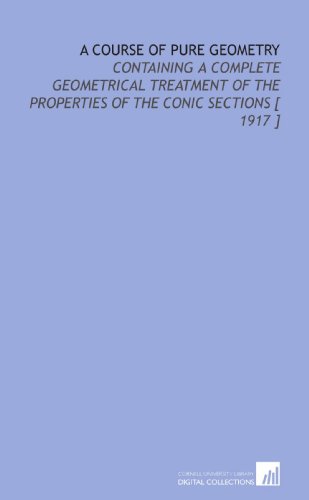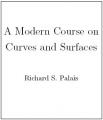
A Course of Pure Geometry: Properties of the Conic Sections
by E.H. Askwith
Publisher: Cambridge University Press 1917
ISBN/ASIN: 111234893X
Number of pages: 314
Description:
The book does not assume any previous knowledge of the Conic Sections, which are here treated ab initio, on the basis of the definition of them as the curves of projection of a circle. Many of the properties of the Conic Sections which can only be established with great labour from their focus and directrix property are proved quite simply when the curves are derived directly from the circle.
Download or read it online for free here:
Download link
(multiple formats)
Similar books
 Rotations of Vectors Via Geometric Algebra
Rotations of Vectors Via Geometric Algebraby James A. Smith - viXra
Geometric Algebra (GA) promises to become a universal mathematical language. This document reviews the geometry of angles and circles, then treats rotations in plane geometry before showing how to formulate problems in GA terms, then solve them.
(7167 views)
 A Modern Course on Curves and Surfaces
A Modern Course on Curves and Surfacesby Richard S. Palais - virtualmathmuseum.org
Contents: What is Geometry; Geometry of Inner-Product Spaces; Linear Maps and the Euclidean Group; Adjoints of Linear Maps and the Spectral Theorem; Differential Calculus on Inner-Product Spaces; Normed Spaces and Integration; ODE; and more.
(13786 views)
 Geometry and Billiards
Geometry and Billiardsby Serge Tabachnikov
Mathematical billiards describe the motion of a mass point in a domain with elastic reflections from the boundary. Billiards is not a single mathematical theory, it is rather a mathematician’s playground where various methods are tested.
(18074 views)
 Foundations of geometry for university students and high-school students
Foundations of geometry for university students and high-school studentsby Ruslan Sharipov - arXiv
This is a textbook for the course of foundations of geometry. It is addressed to mathematics students in Universities and to High School students for deeper learning. It can also be used in mathematics coteries and self-education groups.
(16723 views)